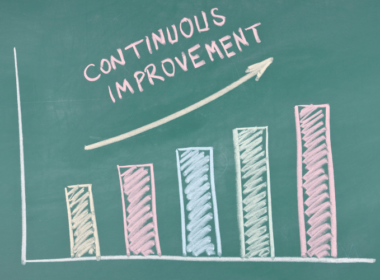Remote work is gaining unprecedented popularity across the globe. Enterprises across industries and continents are transitioning towards remote working. From colleges to courts to clinics, manufacturing to marketing, interviewing to induction, sales pitch to investor pitch we have seen so many businesses and processes shifting entirely to the digital world.
43% remote workers value flexibility as the biggest benefit
Evaluating Remote Work
Remote work is highly flexible, and convenient. We don’t have to worry about losing hours in commute. But are we able to reap those extra hours? Or are we still losing those extra hours?
There are of-course several visible benefits of remote work. One of the advantages of remote work is that location is no more a barrier between talent and the right opportunity. But, is remote-working as glittery as it seems? Not really.
Managing time, balancing work and life, maintaining good digital hygiene and collaborating with peers has become a real pain in the pandemic. Gain and pain are inseparable it seems.
In the remote world, collaboration & communication is as important as our domain craft, experience, creativity and problem solving skills.

Work from the village, work from the terrace, work from the lounge, work in boxers and so many other hashtags are doing rounds on social media. Sounds cool, right? Indeed, it is. But remote working often requires us to work in real-time with team members who might be in different time zones. Workers who have to stay-up late in the night just to sync-up on a project update might find this as NOT COOL. Losing the extra hours gained from no-commute to in-efficient collaboration tools & processes is NOT COOL either.
18% of workers around the world work remotely full-time
– Oberlo.com
– Oberlo.com
Challenges Faced by Remote Teams and Remote Workers
As already mentioned, digital-collaboration and communication between team members, resource management, digital hygiene are challenging aspects of remote work-life.
Let us deal with some of these issues in detail.
Challenges Faced by Remote Teams
- Thorny Collaboration Experience
Working remotely is a bit thorny especially when you have a personal life constantly intruding into your professional life, when there is time-zone difference between you and your colleagues, when there is not strong cultural and one-to-one bondings, when there is lack of commitment from one or multiple project-mates, when there is no proper roadmap, guidelines or communication from the leaders, when you are low and suddenly you get a notification for team-meetup.
Additionally, internet issues and software and hardware related tech problems without any support further complicate the collaboration challenges.
- Communication Challenges
One of the biggest perks of onsite working is employees develop a strong bond, understanding and sense of belonging. The secret of in-person communication is that your body language expresses a lot more than words ever can, trust is a direct implication of how you communicate. In-person communication boosts your efficiency to explain things and delegate tasks effectively. Digitally, it becomes real-tough!
On-site peer communications used to avail you some off-screen time, off-work time but remote peer communication means extra screen-staring. Eye-fatigue, sense of exhaustiveness and stress are inevitable by-products.
NetSpeed Learning conducted a survey among remote team leaders and members. 54% of the survey respondents suggested virtual team leads to “communicate” and “connect” with members.

- Training & Recognition Challenges
Survey members ranked less visibility within the organisation, lack of social interaction, lack of coach and mentoring as one of the most frustrating aspects of remote working.
- Isolation & Personal Challenges
Some segments of the workforce feel isolated, loneliness. They find themselves cut from their social life. This could lead to depression.
Working remotely you may get unexpected calls, texts, visitors at home, some personal emergency and what not! Under such circumstances, it becomes really challenging to stay focused, committed and deliver value.
How Can These Challenges Be Addressed With The Help Of Remote Working Tools?
Growing adoption of remote work, the market is flooded with remote working tools. Slack, Miro, Trello, Zoom, G Meet, MS Team, Skype, Mural are the most popular ones. ProofHub, Instagantt, Krisp, Todoist, Timezone.io are few consider-worthy tools.
Having a plethora of options is cool but would you be able to work effectively handling multiple apps simultaneously?
How about grouping a few together?
How about having an app that addresses communication challenges, boosts employee visibility within an organisation, addresses connection gap, counts-in time zone differences, enables a leader to efficiently manage projects and lead peers by mentoring them and giving constructive feedback.
How about having a remote working social platform for your organisation?
It’s time to run your organisation as a social network!
With that as our end-goal, we have developed an in-house remote working tool, TIMELY.
TIMELY : Deliver Predictability With Remote, Agile, Self Managed Teams
Timely addresses some of the core-problems associated with remote working. Timely enables entire teams including scrum masters, leads, operations and delivery managers to communicate effectively, connect on-demand, track peer engagement and availability, plan your work sprint and a lot more.
How?
Explore TIMELY to know more or BOOK A FREE DEMO.
This article was written with the help of Nikita Goel, guest contributor.
Frequently Asked Questions(FAQs)
1. What are the top challenges of working with remote teams?
Remote teams face challenges in terms of Communication and collaboration due to time zone differences; Lack of face-to-face interaction; Difficulty in maintaining team cohesion; Technical learning also becomes a challenge; and often poses cultural challenges for the org as well.
2. What is the most effective method when working in agile remote teams?
Effective communication and clear expectations are key when working in agile remote teams. Utilizing tools such as project management software, video conferencing, and instant messaging can help with communication and collaboration. Setting clear goals and deadlines, and regularly checking in with team members to ensure progress is being made, can also help keep the team on track. Additionally, it’s important to establish trust and accountability among team members and to foster a culture of transparency and open communication.
3. What are some tips for companies to improve their remote work strategy?
One problem that companies may face when implementing a remote work strategy is a lack of communication and collaboration among team members. Without face-to-face interaction and the ability to easily pop into someone’s office, it can be difficult to stay on the same page and ensure that tasks are being completed on time. This can lead to misunderstandings and delays in completing projects. To solve this issue, companies should utilize communication and collaboration tools such as video conferencing and instant messaging, establish clear goals and deadlines, and have regular check-ins to ensure progress is being made.
Another issue that companies may face when implementing a remote work strategy is difficulty in maintaining company culture and employee engagement. Without the daily interactions and sense of community that an office provides, it can be difficult for remote employees to feel connected to the company and its values. This can lead to employee burnout and disengagement. To solve this issue, companies should establish clear guidelines, priorities, and expectations for remote employees and find ways to regularly connect and engage with them through virtual team-building activities, and regular one-on-one meetings. Additionally, providing resources and support to employees to help them adapt to remote work can also help in maintaining company culture and employee engagement.
4. What are the top features of remote working software?
Real-time collaboration, task management, video conferencing, file sharing, time tracking, calendar integration, instant messaging, project management, remote access, and security features are the top features of remote working software.








